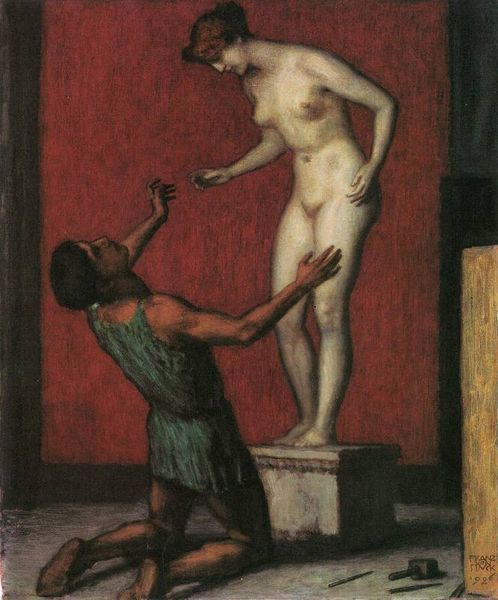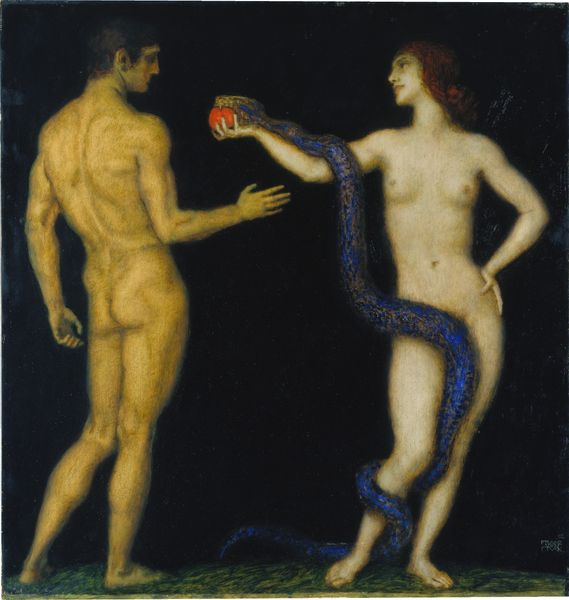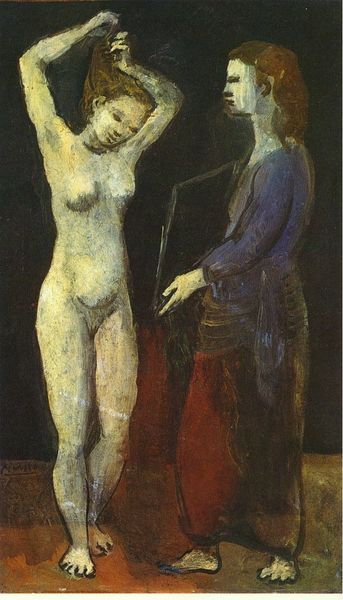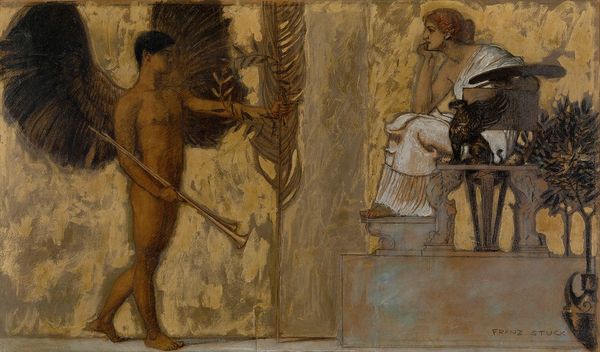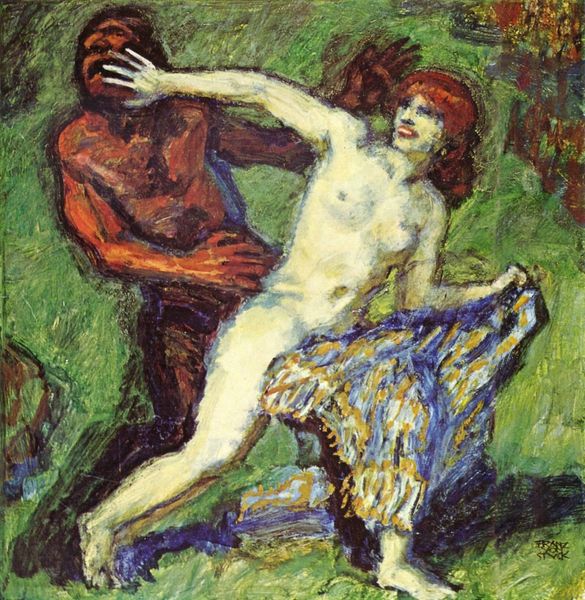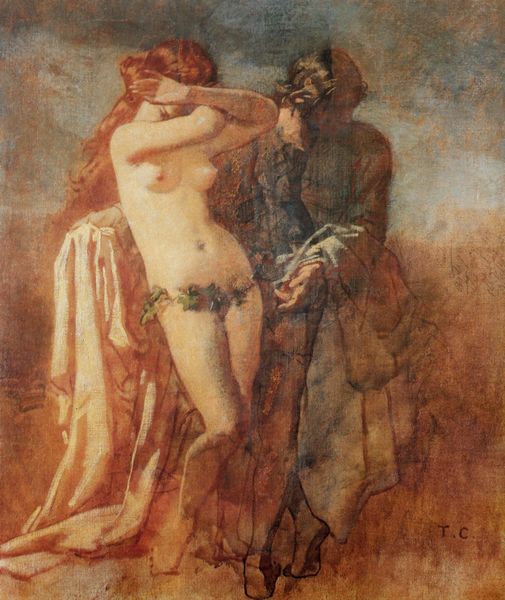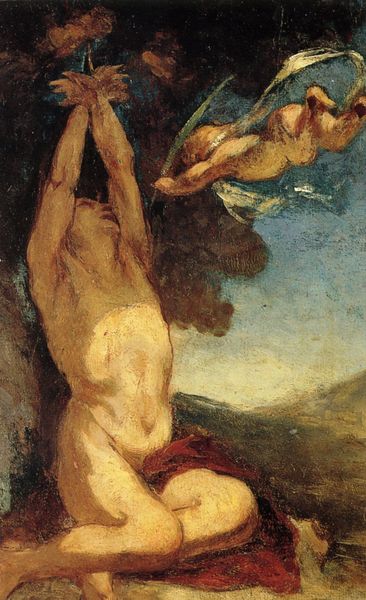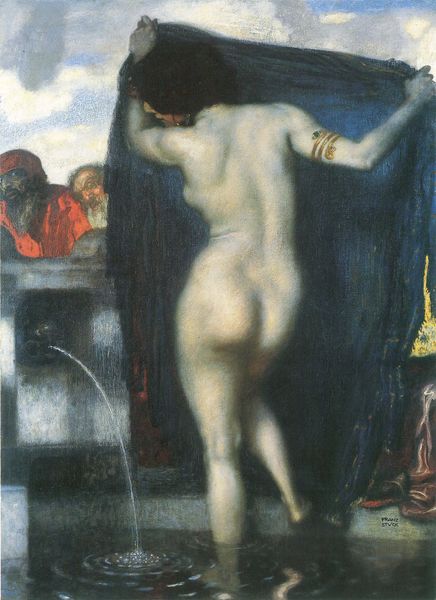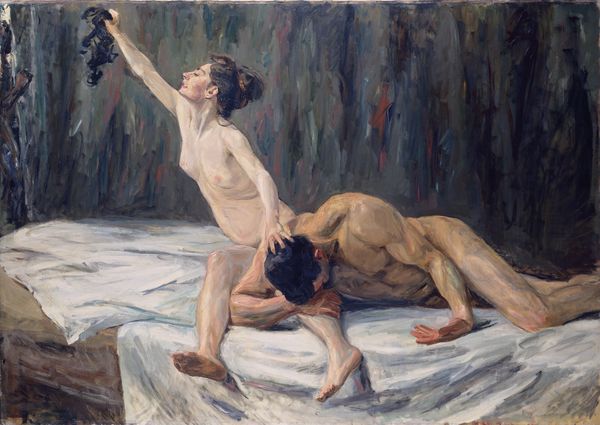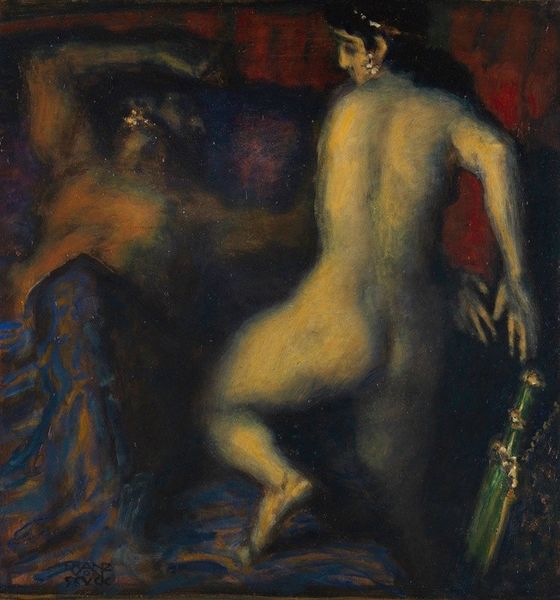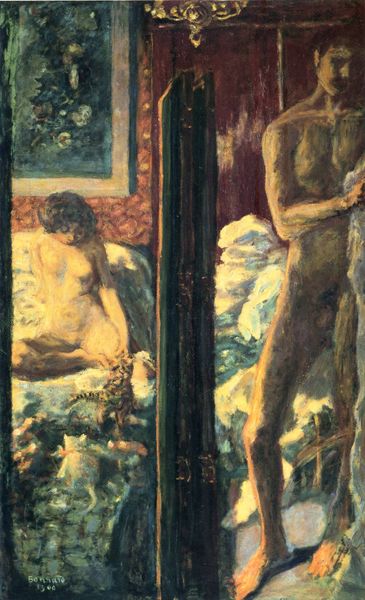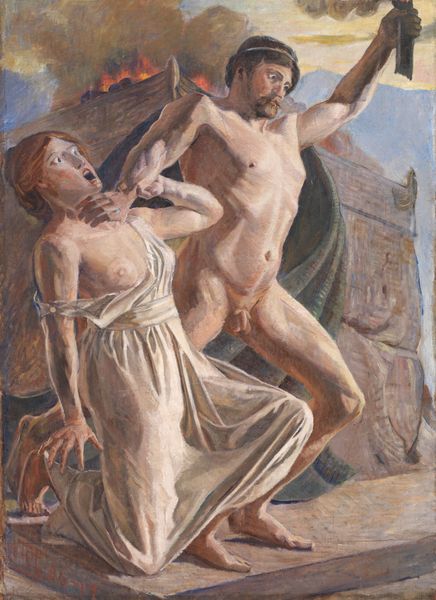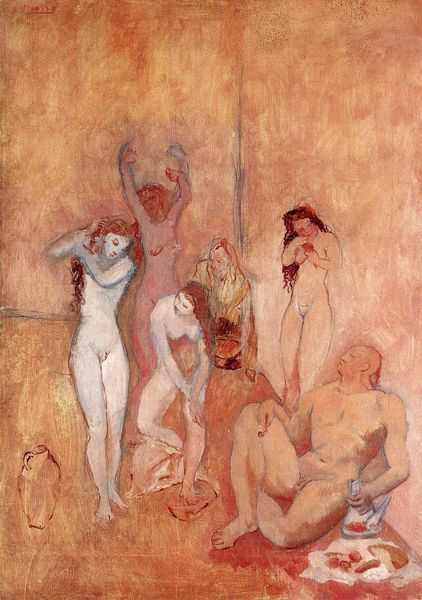
painting, oil-paint
#
painting
#
oil-paint
#
classical-realism
#
figuration
#
oil painting
#
mythology
#
history-painting
#
academic-art
#
nude
#
portrait art
Copyright: Public Domain: Artvee
Curator: I’m immediately struck by the red—it’s not just a backdrop, but a burning, visceral energy that permeates the scene. It sets a kind of fever-dream mood that feels charged and alive. What's your take on it? Editor: You know, it's interesting you say that because when looking at "Pygmalion" completed by Franz von Stuck in 1926 using oil paint, what comes to mind is actually the exploration of male desire, artistic creation, and the objectification of the female form that is quite characteristic for that period. Curator: Ah, yes, that dance. I almost want to forget the cultural baggage for a moment and see what happens. Forget that this piece falls under art history, what does it mean now? Because in Stuck’s rendering, Pygmalion looks almost...beseeching, a bit desperate? He is kneeling and practically worshiping the woman he created. It reads very personally, I feel his ache. Editor: Well, precisely. The historical context and our modern lens aren't mutually exclusive; we must understand Pygmalion as an archetypal figure representative of both artistic creation and, frankly, male dominance in artistic creation. And while you see desperation, I see entitlement dressed in worship. It subtly reinforces how the gaze can transform a person into an object to serve another's desire. Curator: Huh. Interesting. I’ll confess, my read was a tad more romantic, seeing this creation almost as the fulfillment of the artist himself? Stuck created not only an image but the perfect female form. But even that interpretation has to include awareness that it is loaded. What's more unsettling is this statue's passivity as she almost condescends the mortal man before her. She becomes almost an idealized weapon of male dominance. Editor: Right, it’s an exploration of the power dynamics inherent to creation—artistic, gendered, and social. The cool tones of the sculpture set against the fiery background emphasizes the artist's passion yet underlines how such creative acts often dehumanize and erase agency in the pursuit of beauty. I think that what we feel unsettled by makes the work that much more of an insightful object that mirrors how long traditions of making and beauty rely on real power imbalances. Curator: I think you’re right. Revisiting this after you’ve spelled that out has opened new windows to that. Thanks. Editor: It's vital that artworks force conversations across history.
Comments
No comments
Be the first to comment and join the conversation on the ultimate creative platform.
